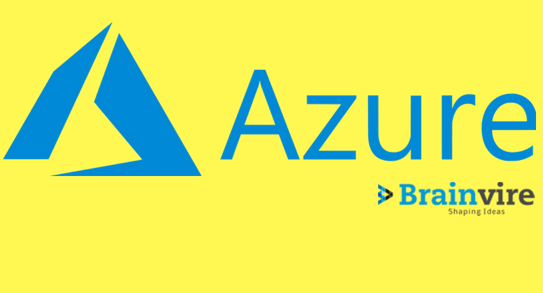
Both .NET Framework and .NET Core have made their mark in the web application development domain. However, there is still a lot of debate on which is better in the long run. But you know what, this debate is a never-ending one.
If you’ve ever consulted a Microsoft development company for your past projects, you’ll understand why I’m saying this. The consultants will always advise you on what is good for your specific project. They cannot decide which of these two variants of .NET is the best. Every technology has its own powers and limitations.
Through this blog, you’ll get to know a brief overview and the core differences between .NET Framework and .NET Core. I will cover these differences based on the following set of points:
- Cross-Platform Compatibility and Open Source
- Deployment Model
- Performance and Scalability
- Library Collection
Let’s get started with it. It’s hard to choose from two of the best. Analysing the pluses and minuses, it might be helpful to you to overcome the confusion.
Overview of .NET, .NET Framework & .NET Core
Microsoft created .NET as a software development platform for building many different types of web applications. It provides tools and libraries that developers can use to develop applications and services in a much easier and faster way.
The image below will give you a clear idea of what the .NET ecosystem looks like.
Source: AzureBarry
.NET supports two implementations for developing server-side applications:
- .NET Framework
- .NET Core
Now let’s look into the details of both of them.
.NET Framework
Microsoft started developing the .NET Framework in the late 1990s. It was initially named as Next Generation Windows Service. By late 2000, the beta versions of .Net 1.0 were first released. Subsequently, more frameworks were released by retaining and adding new features from the previous versions.
It consists of a runtime environment for creating Windows apps and web services. It supports websites, services, and desktops apps only on Windows.
The framework has two main components:
- Common language runtime (CLR): It is the engine that runs apps and provides memory management.
- Extensive class library: A complete package of tested reusable types of code for all development stages that any developer can use.
The primary motive behind creating .NET was to provide an easy-to-use object-oriented environment, which is supported by multiple languages. This makes development easier. But this framework was closed-source and users started migrating to open source platforms. Thus, to ace the competition, Microsoft created .NET Core as an open-source platform.
.NET Core
It is an open-source and cross-platform framework that can build applications for all operating systems. It works on Windows, Mac, and Linux. You can use C#, Visual Basic, and F# languages to write applications and libraries for .NET Core.
Microsoft designed it in a way so as to ensure broad adaptability to new platforms and workloads.
High-performance web and microservices made up the first major version of .NET Core. When version 2.0 was announced, multiple APIs and components were added that simplified the migration of web applications to .NET Core.
Both .NET Core and .NET Framework are known to make things easy for the developers. Still, there are some core differences between the two. Let’s understand them.
Decoding the Differences Between .NET Framework and .NET Core
Source: Google Trends
Before we list down the differences, let’s see what Google trends say.
As you can see, the .NET core run-time is gaining more popularity in the enterprise market.
Moreover, in a Visual Studio Live Conference Keynote, Microsoft affirmed that .NET Core is the future of .NET ecosystem which includes runtime, AOT, JIT, BCL (Base class library), GC, C#, F#, ASP.NET, VB.NET, Entity Framework, ML.NET, WPF, WinForms, and Xamarin.
It’s time to go through the core differences now.
Cross-Platform Compatibility and Open Source
.NET Framework
Developers could build applications on a single platform in the .NET Framework.
The language compilers of .NET Framework make sure that you can write programs in one language and compile and access them in other languages.
Initially, the .NET Framework was a licensed and proprietary software framework. But gradually, Microsoft launched certain components of the .NET Framework as open-source.
.NET Core
It has cross-platform compatibility which means it can work on Windows, Linux, and even Mac Platforms.
This compatibility helps developers and companies to develop cross-platform applications and migrate the existing applications to another platform.
As mentioned earlier, Microsoft released .NET Core as an open-source software framework. Therefore, both enterprises and individual developers can use .NET Core without paying any licensing fees.
Deployment Model
.NET Framework
In .NET Framework, developers can deploy web applications only on the Internet Information Server.
In addition, it also has the option of Xcopy deployment. This gives developers the ability to copy the files into the directory where they’re ready to run. This is a good idea for simple applications but for complex apps, the steps to fully deploy on the server are complicated.
.NET Core
.NET Core is flexible in terms of deployment.
Whenever any new version of the .NET core is launched, it can be instantly updated on one machine and also automatically gets uploaded in new directories without affecting the existing app.
Moreover, developers can also directly deploy the applications in the cloud or self-host the application by creating their own hosting process.
Performance and Scalability
.NET Framework
.NET framework lags in performance. It’s not faster, secure, and flexible in nature.
When an application is launched for the first time, the .NET Framework compiles the CIL code into executable code using the just-in-time compiler. Then, it caches the executable program into the .NET Native Image Cache.
Developers can speed up the first launch by using the Native Image Generator utility to manually compile and cache any .NET application.
.NET Core
It is more effective than .NET Framework as developers can boost the applications’ performance significantly without using any additional hardware.
.NET core automatically optimizes the compiled code without any changes. This recompilation feature increases performance.
Developers can build, test, and deploy applications directly in the cloud.
Thus, the .NET core helps developers increase the performance and scalability of the applications in a hassle-free way.
Library Collection
.NET Framework
.NET Framework developers can leverage the robust class libraries. These libraries can implement common functions, such as file reading and writing, database interaction, graphics rendering, and XML document manipulation.
.NET Core
Even .NET Core has several robust class libraries but it also uses a redesigned common language runtime called CoreCLR. Developers have the choice to select and use only those libraries that are required for the application. Unnecessary libraries can be removed easily.
After looking at these four differences, it’s clear that .NET Core offers more benefits to both developers and enterprises. This run-time also makes it easier to build SPAs (Single-Page Applications), especially using React JS. Let’s explore the currently trending combination of SPAs, ASP.NET Core and React.
SPAs, React.js, and .NET Core
Before telling you what this combination can do for your business, let’s quickly recap what are SPAs and React.js.
SPAs
These are web apps that can load a single HTML page and dynamically update it as the user interacts with the app.
SPAs use AJAX and HTML5 to create fluidity and responsiveness in Web apps, without constant page reloads. However, this means more work happens on the client-side, in JavaScript. For the traditional ASP.NET Core developer, it can be difficult to do so much at once. Fortunately, there are many open-source JavaScript frameworks, such as React, that make it easier to create SPAs.
React.js
Developed by Facebook, React is a front-end user interface library. It has become quite popular amongst Javascript users. Netflix, Airbnb, Yahoo, and many other giants rely on it.
Developers can use React to drop in a single UI component on a web app. They can also build an individual SPA by using the extra libraries of .NET Core. This allows the developer to pick the right UI approach when developing web apps.
Thus, .NET Core offers more flexibility to develop a picture-perfect web app for your business.
We’ll now see what ASP.NET Core 3.x has in store for React SPAs. Don’t worry if you can’t understand the coding jargon. You can get in touch with companies offering .NET Core development services. They’ll help you out.
How ASP.NET Core 3.x Benefits React SPAs?
Information source for this section: Carlrippon blog
MVC Service Registration
There are some new extension methods for adding MVC-related services to the ConfigureServices method in Startup class. AddMvc will continue to work as before, adding all the MVC related services. But, we now have AddControllers, AddControllersWithViews, and AddRazorPages which can add services for more specific scenarios:
AddControllers: You can use this when the app is purely a web API and doesn’t need any server-side views or Razor pages.
| public void ConfigureServices(IServiceCollection services){ services.AddControllers();}view |
AddControllersWithViews: It is used when the app is a web API with some server-side views.
AddRazorPages: It is used when the app uses Razor pages. Remember that AddControllers or AddControllersWithViews will also need to be called in order to get the web API features.
Built-in JSON support
ASP.NET Core doesn’t rely on Json.NET anymore to serialize and deserialize JSON. A JsonSerializer class is an addition in the System.Text.Json namespace containing Serialize and Deserialize methods. Internally, ASP.NET Core uses this functionality in the model binding process. If our web API needs to call other web APIs we can use the following code to deserialize the response:
| var jsonContent = await response.Content.ReadAsStringAsync();var user = JsonSerializer.Deserialize<User>(jsonContent, new JsonSerializerOptions{ PropertyNameCaseInsensitive = true}); |
Endpoint routing
In endpoint routing, the process of matching which endpoint will execute is separated from the actual running of that endpoint. This allows the route information to be available earlier in the HTTP request processing pipeline.
To create endpoints for all the API controllers in ASP.NET Core 3.0, the developers need to replace the app.UseMvc with app.UseEndpoints:
This is how it’s done.
| public void Configure(IApplicationBuilder app, IWebHostEnvironment env){ … app.UseEndpoints(endpoints => { endpoints.MapControllers(); });} |
SignalR endpoints and automatic reconnect
Similar to web API endpoints, SignalR endpoints can use the new endpoint routing:
| app.UseEndpoints(endpoints =>{ endpoints.MapControllers(); endpoints.MapHub<QuestionsHub>(“/questionshub”);});view |
In the React client, when establishing the SignalR connection, the developers can signal it to automatically reconnect after a connection is lost:
| const connection = new HubConnectionBuilder() .withUrl(`${server}/questionshub`) .withAutomaticReconnect() .build(); |
C# 8
C# is loaded with useful features that includes nullable reference types. We can enable nullable reference types in our project file as follows:
| <PropertyGroup> … <LangVersion>8.0</LangVersion> <Nullable>enable</Nullable></PropertyGroup> |
Reference types are not nullable by default. We will be warned by Visual Studio when a null reference exception may occur in our code:
Switch expressions are ideal for mapping code and save the developers some valuable keystrokes:
| public static string GetLevel(int level) => level switch { 1 => “low”, 2 => “medium”, 3 => “high”, _ => throw new ArgumentException(“invalid level”), }; |
This section can be stretched even further but covering all the points is beyond the scope of a single article.
When Should You Choose…
.NET Framework
- You have less time to learn new technology.
- Your existing app is written in the .NET framework and you just need to improve the overall functionality.
- You are bound by tight release schedules.
- You may want to build Windows client desktop applications using Windows Forms or WPF.
.NET Core
- Your business needs a high-performing and scalable system.
- You want to containerize your solution.
- You have to install apps with dependencies on various .NET versions.
- You have a requirement of side-by-side .NET versions per application.
- Your requirement is to develop a microservices-based system.
- You’re prepared for the inevitable learning curve that comes with .NET Core.
Quick Comparison
Here’s a quick reference table that you can save and have a look whenever you are planning for ASP.NET Core web development.
| .NET Core | .NET Framework |
| Build for Windows, Mac OS, and Linux | Build for Windows |
| Supports Web Page, Web AP, and MVC | Supports Web Forms, Web API, Web Pages, and MVC |
| Develop with Visual Studio for Mac and Visual Studio Code using C# or F# | Develop with Visual Studio using C#, VB, F# |
| Great performance than .NET | Lags in Performance |
| Builds modern, cloud-based apps | Build server-based web apps, enterprise-grade apps |
Source: SpecIndia
A Final Word
As a senior Microsoft developer in Brainvire, I personally feel that .NET Core can get your business ahead in the long run. However, the .NET Framework is not bad either. It will work well for simpler applications. You can always consultation & brainstorming with a Microsoft consultant on what is good for your particular project.
Related Articles
-
Outsourcing .Net Project Development – Checklist to evaluate an Offshore Company
Talking About Outsourcing .Net Project Development – Checklist to evaluate an Offshore Company, The world of software development today seems to be a field of war with so many technologies
-
.Net 5: What to Expect from Microsoft’s New App Development Platform
With every passing day, there is news of some new technology being developed or improvements made to existing technologies. In 2019, Microsoft announced the launch of .Net 5. As promised,
-
Why Azure & Dot Net Are Technologies Of The Future
Talking About Why Azure & Dot Net Are Technologies Of The Future, Azure and Dot Net are considered the technologies of the future. What exactly are the specific features and



